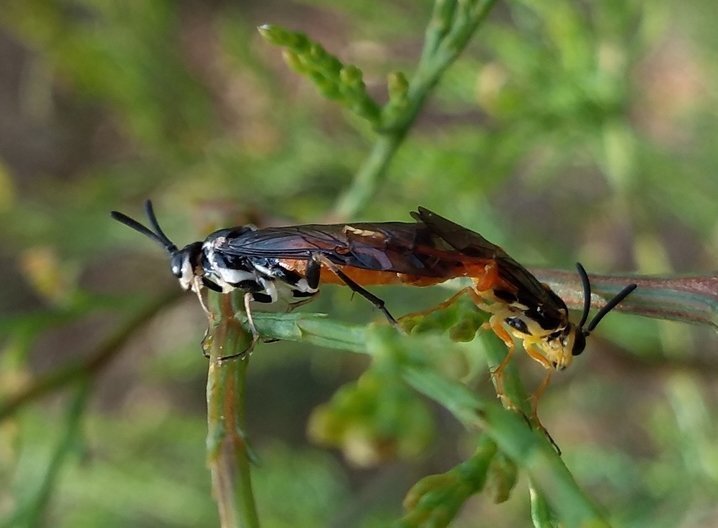Zenargidae - Zenarge turneri

Image above courtesy of @grampianshiker (iNaturalist observation) CC-BY-NC
Workbook
Note: This is a “work in progress”. Changes may be made as I discover additional relevant information.
Family Zenargidae
This sawfly family is rather special, as it contains just one subfamily Zenarginae, one genus Zenarge and one species Zenarge turneri.
Zenarge turneri was first described in 1918 by S.A. Rohwer. He recognised its unusual combination of features and placed it in a new subfamily Zenarginae, within the family Argidae.
In 2021, Leonardo Malagón-Aldana et al. published the results of a comprehensive phylogenetic study of representatives of 57 genera within the Argidae.
Their findings led them to raise Zenarge turneri to family status - Zenargidae. They also concluded that this species is either a sister to the Pergidae or to an (Argidae + Pergida) grouping.
Either way, this little insect occupies a key position in the sawfly evolutionary tree.
Description of Zenarge turneri Rohwer
Female:
length: 10-15mm
head: black central area on vertex extending from base of antennae back to occiput; clypeus, labrum, mandibles (except tips), face, inner orbits above antennae, posterior orbits and genae all yellowish white: clypeus with front margin slightly emarginate
antenna: black; with 3 antennomeres - scape, pedicel and flagellum with single undivided flagellomere, ~1.2x longer than head width
thorax: pronotum black with white dorsal, ventral and lateral borders; mesoscutum black; scutellum white with black anterior border, without hind lobes; pleurae black with a wide, white band on mesepisternum and metepisternum
abdomen: yellowish-orange (ferruginous), propodeum (T10) and apical two tergites (T8, T9) black and anterior half of T7 blackish/brown
wings: subhyaline, venation dark brown, including costa and stigma; stigma 3x as long as wide: forewing with a divided anal cell and 3 separate cubital (radial) cells
legs: black; fore and midleg coxae, trochanters, apices of femora and entire tibiae and tarsi yellowish white; hind coxae white, apart from a large black spot on upper lateral surface; hind leg trochanters, basal fourth of tibiae and four apical tarsal joints white; mid and hind tibiae with preapical spurs, two spurs on mid and one on hind tibiae; all legs with two apical tibial spurs.
Male:
length: 9mm
agrees closely to above description of female, except for the terminalia of the abdomen and the following differences:
antenna: ~1.6x longer than head width
abdomen: all segments ferruginous, except for anterior black stripes on T6 and T7
legs: all segments of all legs ferruginous except for hind tibae and basitarsus
image from Lucid keys “What wasp is that?”
Zenarge turneri wings - from Morice (1919) Pl.11, Fig.3
Click here to view iNaturalist Research Grade observations of Zenarge turneri
Description based on following references:
Rohwer, S.A. (1918) “Notes on and descriptions of some sawflies from the Australian region” Ann. & Mag. nat. Hist. (9) 2: 433-440
Malagón-Aldana, L.A., D.R. Smith, A. Shinkohara & L. Vilhelmsen (2021) “From Arge to Zenarge: adult morphology and phylogenetics of argid sawflies (Hymenoptera: Argidae)” Zool. J. Linn. Soc. 193: 880-938
Morice, F.D. (1918) “Notes on Australian sawflies, especially the “Authors' Types” and other specimens in the British Museum of Natural History and the Hope Collections of the Oxford University Museum; with diagnostic synopses of the genera and species, and photographs illustrating their structural characters”. Trans. Entomol. Soc. London 66: 247-333
This is a workbook page … a part of our website where we record the observations and references used in making species identifications. The notes will not necessarily be complete. They are a record for our own use, but we are happy to share this information with others.

